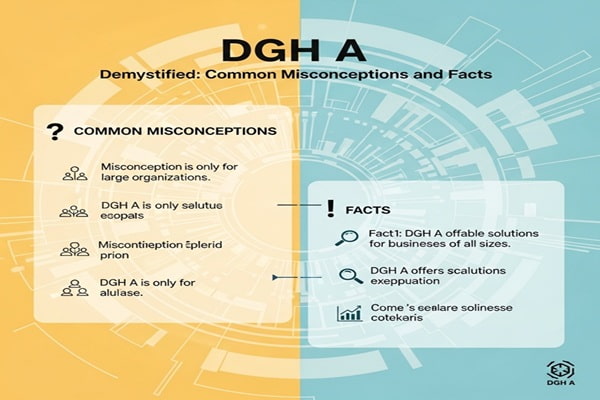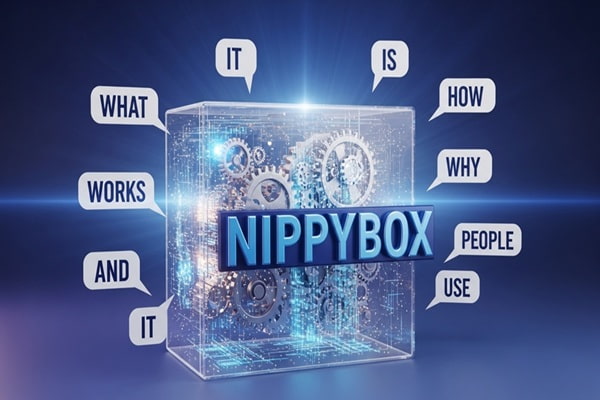Have you heard of DGH A yet? It’s the buzzword making waves in digital circles—but what exactly is it, and can it really help your business grow?
In this guide, I’ll break down DGH A (Digital Growth Hub), debunk some myths, and show you how you can apply its power—without needing a PhD in data. Think of it as your friendly introduction to smarter, faster, more strategic business growth.
1. DGH A Uncovered: What It Actually Means
DGH A = Digital Growth Hub, a framework that helps businesses harness digital tools and data analytics to drive growth—no fluff, no jargon. Here’s how it works:
-
Collect data from web activity, sales, customer interactions, and more.
-
Analyze it using smart algorithms.
-
Act on insights—optimize marketing, fine-tune operations, and delight customers.
Rather than shooting in the dark, DGH A gives you real-time insights to make strategic decisions. It’s like having a navigation system for your business journey.
2. Popular Myths vs. Reality
Myth 1: It’s Only for Big Corporations
Fact: Whether you’re a solopreneur, a small startup, or a growing business, DGH A tools can scale to your needs. Many affordable platforms offer plug-and-play analytics.
Myth 2: Implementing It Is a Nightmare
Fact: Modern DGH A tools are user-friendly. Most include onboarding support and easy integrations—no massive tech overhaul required.
Myth 3: It’s Just About Tech
Fact: Yes, technology powers DGH A—but real business results demand human collaboration. Success comes from teams working together on data-driven insights.
Myth 4: It Yields Instant Results
Fact: It’s not magic. You need to test, learn, and pivot over time. The payoff is steady improvement—not overnight transformation.
3. The Real Benefits of DGH A
So—what does DGH A actually bring to the table?
-
Efficiency & Cost Savings: Data reveals process bottlenecks, potential automation, and budget drains.
-
Smarter Decisions: Real-time analytics help you spot trends and act on them immediately.
-
Stronger Collaboration: Teams share dashboards and insights, breaking down silos.
-
Better Customer Engagement: Personalize offers and messaging based on in-depth insights.
In essence, DGH A empowers you to run smarter and engage customers with purpose.
4. Real-World Wins You Can Learn From
Retail Reinvented
A mid-size retailer adopted DGH A to manage inventory. The result? Less wasted stock, better purchase predictions, and higher profits.
Tech Startup’s Growth Surge
A software startup used DGH A to track user attention and tweak their onboarding flow—within six months, user retention jumped 40%.
Restaurant Revamp
A local eatery used DGH A insights to update their menu seasonally. Their personalized promotions led to increased customer loyalty and higher repeat orders.
These stories prove DGH A isn’t limited to big players—it’s useful for any business with customers and data.
Also Read : Unveiling the Magic of Spaietacle: A Comprehensive Guide
5. Step-by-Step: How You Can Apply DGH A
Step 1: Start Small
Map out your current processes and data sources—like sales, web traffic, or email campaigns.
Step 2: Assemble the Team
Communicate what DGH A is and how it benefits the business. Hosting a workshop or a short training session helps build buy-in.
Step 3: Choose the Right Tools
Look for platforms that integrate with your existing systems (e.g., Shopify, Mailchimp, Google Analytics).
Step 4: Run a Pilot Project
Test a small initiative—like optimizing a marketing campaign based on customer insights. Gather feedback and measure results.
Step 5: Scale Responsibly
Once your pilot delivers value, expand it gradually. Maintain communication and provide ongoing training to ensure alignment.
6. What DGH A Success Requires
-
Clear goals: Know what you’re tracking and why—whether it’s sales growth, customer retention, or operational efficiency.
-
Team participation: Encourage data sharing and cross-functional collaboration.
-
Consistent reviews: Analyze performance weekly or monthly. Don’t just collect data—use it.
-
Iterative improvement: Use data to refine everything—workflow templates, marketing messages, product offerings.
When done right, DGH A becomes part of your operational DNA.
7. Avoid Common Pitfalls
-
Not focusing on outcomes: Data without action is just noise. Make sure insights lead to change.
-
Going overboard with dashboards: Visualizing everything leads to overwhelm. Focus on key metrics that matter.
-
Never training your team: Tools only work with adoption. Invest in user training early.
-
Expecting perfection: Start with 80% solutions—get them working—and improve from there.
Final Take: Should You Embrace DGH A?
Absolutely—if you’re ready to move from guesswork to strategic growth. DGH A helps you make smarter decisions, streamline operations, and create more meaningful customer connections.
It doesn’t require a massive investment—instead, it calls for commitment and curiosity. With the right mindset, even small businesses can leverage data-driven strategies to achieve big wins.
FAQ: Your Top DGH A Questions (Answered!)
Q: Can small businesses really use DGH A?
Yes! Plenty of tools are affordable and designed for SMEs. Start with one area—like marketing or customer analytics—and build from there.
Q: How long until we see results?
Expect initial improvements in 2–3 months, with more substantial gains over 6–12 months as you refine and expand your strategy.
Q: Do we need a data team or analyst?
Not at first. Modern platforms are user-friendly, and a small cross-functional team can gather, analyze, and act on insights.
Q: What types of businesses benefit most?
Anyone with customers and measurable touchpoints: online stores, restaurants, professional services, B2B companies—you name it!
Ready to Get Started?
DGH A is more than a trendy acronym—it’s a pathway to smarter growth and meaningful impact. Begin with what you already have: your data, tools, and team. Then take one step at a time toward a data-driven future.
After all, it’s not just about collecting numbers—it’s about making them count in ways that matter.












Leave a Reply